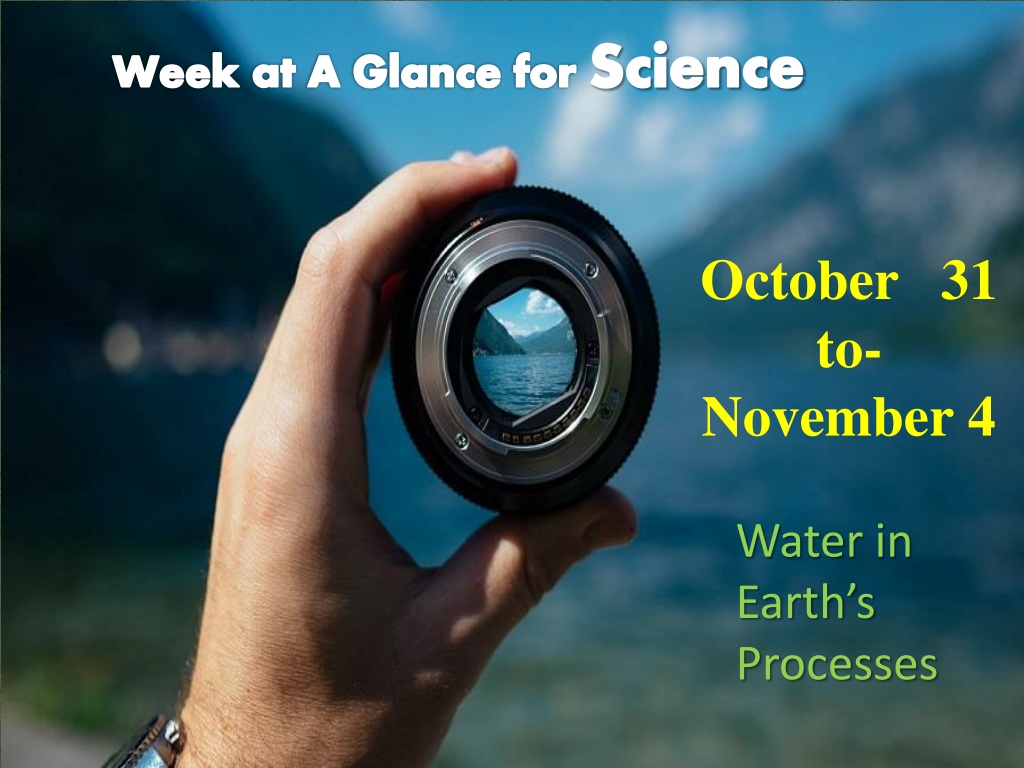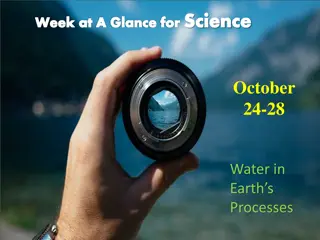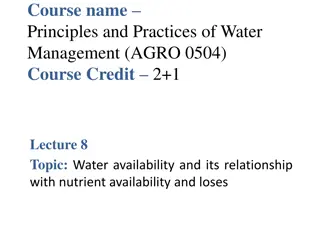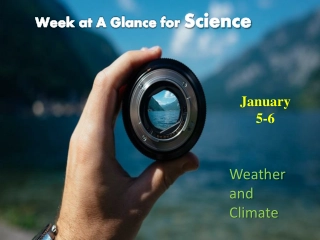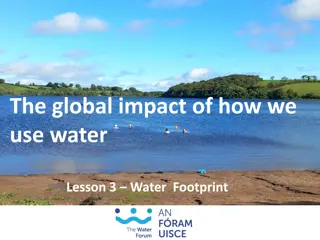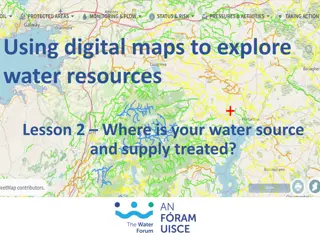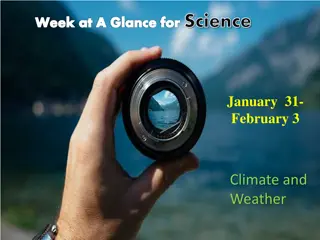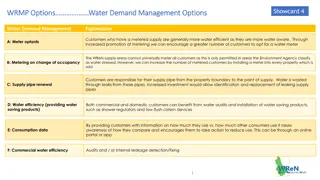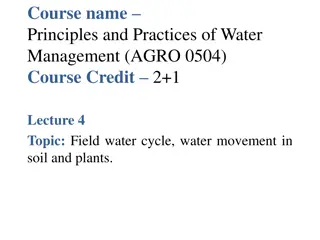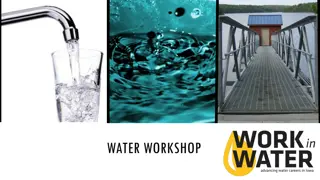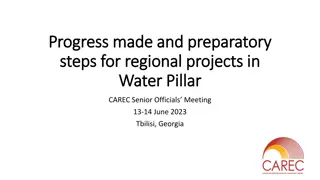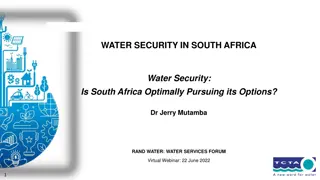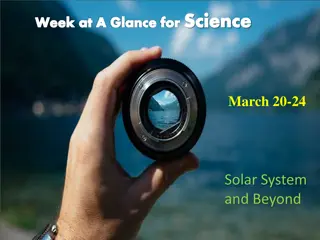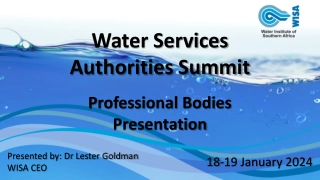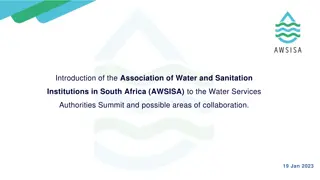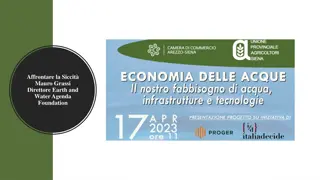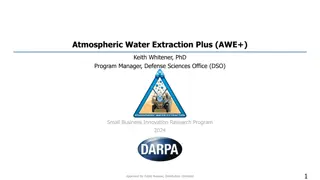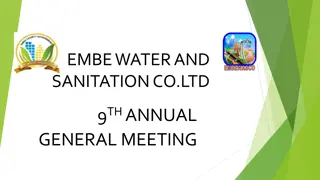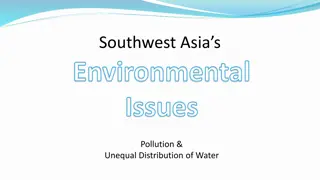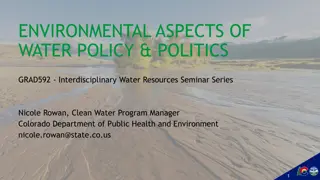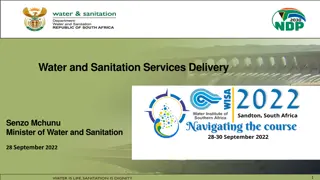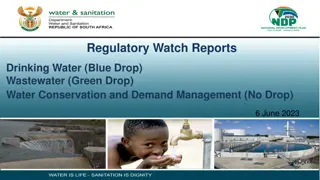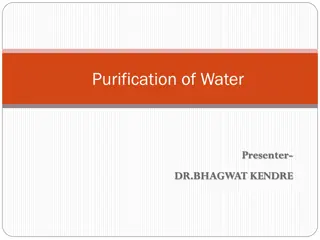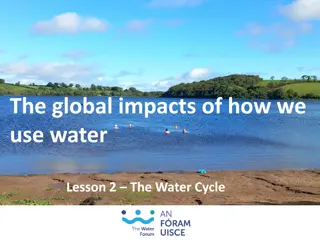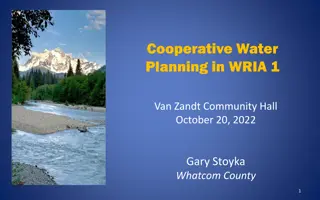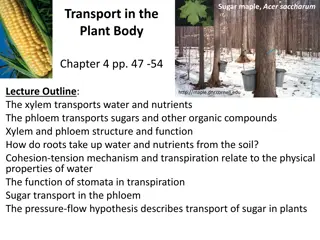Science Week at a Glance: Water in Earth's Processes
Explore a week focused on water in Earth's processes, covering topics such as the water cycle and the role of the sun's energy. Activities include investigations, understanding the significance of water in Earth's processes, and locating water on Earth's surface. Engage in creating water cycle puzzles, illustrations, and study guides to deepen comprehension. The week culminates in a lab day to apply knowledge practically.
Download Presentation

Please find below an Image/Link to download the presentation.
The content on the website is provided AS IS for your information and personal use only. It may not be sold, licensed, or shared on other websites without obtaining consent from the author. Download presentation by click this link. If you encounter any issues during the download, it is possible that the publisher has removed the file from their server.
E N D
Presentation Transcript
Week at A Glance for Science October 31 to- November 4 Water in Earth s Processes
October 31 - November 4 b. Plan and carry out an investigation to illustrate the role of the sun s energy in atmospheric conditions that lead to the cycling of water. (Clarification statement: The water cycle should include evaporation, condensation, precipitation, transpiration, infiltration, groundwater, and runoff.)
S6E3. Obtain, evaluate, and communicate information to recognize the significant role of water in Earth processes. a. Ask questions to determine where water is located on Earth s surface (oceans, rivers, lakes, swamps, groundwater, aquifers, and ice) and communicate the relative proportion of water at each location. b. Plan and carry out an investigation to illustrate the role of the sun s energy in atmospheric conditions that lead to the cycling of water. (Clarification statement: The water cycle should include evaporation, condensation, precipitation, transpiration, infiltration, groundwater, and runoff.)
Monday, October 31 Standard: S6E3. Obtain, evaluate, and communicate information to recognize the significant role of water in Earth processes. b. Plan and carry out an investigation to illustrate the role of the sun s energy in atmospheric conditions that lead to the cycling of water. (Clarification statement: The water cycle should include evaporation, condensation, precipitation, transpiration, infiltration, groundwater, and runoff.) Learning Target: I can describe the Water Cycle. Warm-up: Chapter 14 Workbook Packet Work Session: Direct Instruction; Textbook Ch. 14 The Water Cycle. Create a Water Cycle Puzzle. Illustrate Water Cycle. Create Study Guide Powepoint Closing: TOD Reminders:
Tuesday, November 1 Standard: S6E3. Obtain, evaluate, and communicate information to recognize the significant role of water in Earth processes. b. Plan and carry out an investigation to illustrate the role of the sun s energy in atmospheric conditions that lead to the cycling of water. (Clarification statement: The water cycle should include evaporation, condensation, precipitation, transpiration, infiltration, groundwater, and runoff.) Learning Target: I can describe the Water Cycle. Warm-up: Chapter 14 Workbook Packet/ Video Work Session: Direct Instruction; Textbook Ch. 14 The Water Cycle. Create a Water Cycle Puzzle. Illustrate Water Cycle. Create Study Guide Powepoint Closing: TOD Reminders: Lab Day
Wednesday, November 2 Standard: S6E3. Obtain, evaluate, and communicate information to recognize the significant role of water in Earth processes. b. Plan and carry out an investigation to illustrate the role of the sun s energy in atmospheric conditions that lead to the cycling of water. (Clarification statement: The water cycle should include evaporation, condensation, precipitation, transpiration, infiltration, groundwater, and runoff.) Learning Target: I can describe the Water Cycle. Warm-up: Chapter 14 Workbook Packet Work Session: Direct Instruction; Textbook Ch. 14 The Water Cycle. Illustrate Water Cycle. Create Study Guide Powepoint Closing: TOD Reminders: Quiz Water Cycle
Thursday, November 3 Standard: S6E3. Obtain, evaluate, and communicate information to recognize the significant role of water in Earth processes. b. Plan and carry out an investigation to illustrate the role of the sun s energy in atmospheric conditions that lead to the cycling of water. (Clarification statement: The water cycle should include evaporation, condensation, precipitation, transpiration, infiltration, groundwater, and runoff.) Learning Target: I can describe the Water Cycle. Warm-up: Chapter 14 Workbook Packet Work Session: Direct Instruction; Textbook Ch. 14 The Water Cycle. Illustrate Water Cycle. Create Study Guide Powepoint Closing: TOD Reminders:
Friday, November 4 Standard: S6E3. Obtain, evaluate, and communicate information to recognize the significant role of water in Earth processes. b. Plan and carry out an investigation to illustrate the role of the sun s energy in atmospheric conditions that lead to the cycling of water. (Clarification statement: The water cycle should include evaporation, condensation, precipitation, transpiration, infiltration, groundwater, and runoff.) Learning Target: I can describe the Water Cycle. Warm-up: Chapter 14 Workbook Packet Work Session: Direct Instruction; Textbook Ch. 14 The Water Cycle. Illustrate Water Cycle. Create Study Guide Powepoint Closing: TOD Reminders:
Students will have 15 minutes of Homework each evening. 4 Squares (usually a drawing) Rock Cycle Puzzle Chapter 1 or 3 Workbook Pages Powerpoint Study Guide Study Notes or Study Guides Watch Video from Week at a Glance
Resources https://oceantoday.noaa.gov/watercycle/ https://www.geographyrealm.com/water-earth/ https://www.youtube.com/watch?v=QcteL7-0-74
S6E3. Obtain, evaluate, and communicate information to recognize the significant role of water in Earth processes. a. Ask questions to determine where water is located on Earth s surface (oceans, rivers, lakes, swamps, groundwater, aquifers, and ice) and communicate the relative proportion of water at each location. b. Plan and carry out an investigation to illustrate the role of the sun s energy in atmospheric conditions that lead to the cycling of water. (Clarification statement: The water cycle should include evaporation, condensation, precipitation, transpiration, infiltration, groundwater, and runoff.) c. Ask questions to identify and communicate, using graphs and maps, the composition, location, and subsurface topography of the world s oceans. d. Analyze and interpret data to create graphic representations of the causes and effects of waves, currents, and tides in Earth s systems.
